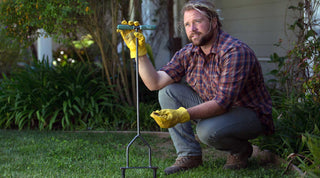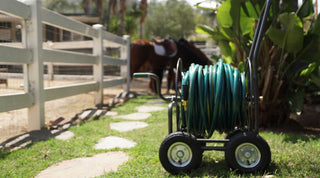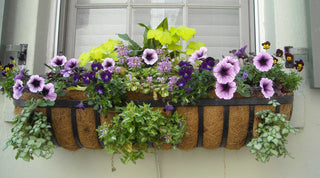
All yards are not created equal and not everyone has great soil to work with for gardening. Raised beds can give you more room to grow and there are many benefits above and beyond just planting in any old spot in your yard. Raised beds generally don’t take up a lot of space and they can be built in almost any spot that gets enough sunlight each day. You can even have a raised garden bed on a concrete patio where there isn’t any soil.
Most of the time the soil in a raised bed is considerably better than the soil in your yard. Most homes are built on clay with little to no topsoil. With a raised bed you can easily fill it with high quality planting soil and then add whatever amendments and fertilizer are recommended for the plants you want to grow. Also, with a raised bed no one is going to be walking on it and there aren’t any pathways so all of the soil can be planted. In addition, soil in a raised bed is generally warmer than the soil in the yard, which means you can plant earlier in the spring and keep your garden going longer in the cooler months of fall and early winter. Improved drainage adds to the benefits of raised bed gardening and you can plant wide rows taking up most of the bed for a higher yield in a smaller space than with a traditional garden.
Raised Bed Gardening Tips
Find a spot that gets six to eight hours of sun per day and determine what size garden you’d like to have. Most gardeners prefer beds that are between three and four feet wide and six to eight feet long for a lot of room to work with. Of course how big or how small you make it is really up to you. Keeping the bed no wider than four feet will make it easier to reach your plants without having to step or kneel on the bed itself though so keep that in mind. You can always have several beds with room to get by in between if you have a larger space and want to grow more. The recommended height for most raised beds is 10 to 12 inches tall to make room for the roots. With a longer bed it’s a good idea to build in supports for the sides so they don’t bow out or shift with time.
There are many options for building a raised bed and many kits available including Yard Butler Garden Corners, which allow you to insert boards into each one to make whatever size bed you desire without the need for tools. Just head to your local hardware store, choose your boards, and get started. Once you have the walls built it’s a good idea to line the bed with chicken wire or hardware cloth to keep pests out of your garden. And if the whole bed is going to be raised it will need a bottom with adequate drainage holes. Remember that all of that dirt and soil will weigh a lot once your garden is underway so make sure to position your raised bed on sturdy ground and be mindful of weight if you’re build one on a patio or deck.
With the bed built just fill with soil and you’ll be ready for planting. With a little more effort you can also install drip irrigation or run a soaker hose through your new garden to make watering easy and efficient. There are several different methods for planting crops and we’ll discuss those in a future post. Once you’ve seen growth from your seeds cover the bare spaces with organic mulch to help with water retention and discourage weed growth. Most importantly, enjoy your garden!







